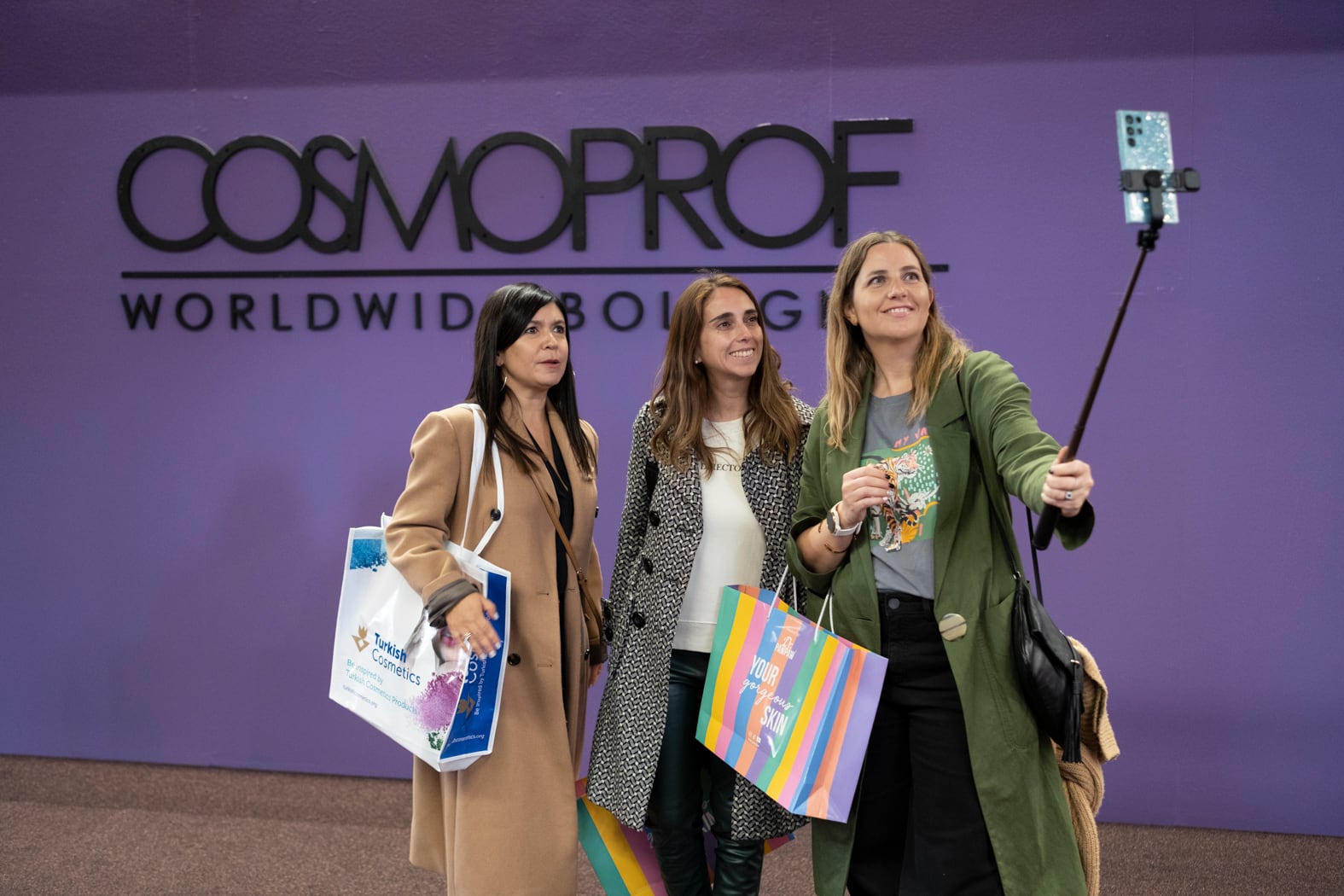According to the organisers, this year’s Cosmoprof Worldwide Bologna will welcome 250,000 beauty and personal care professionals from 65 different countries, as it continues to be a strategic event for launching new brands and product launches.
There will be 29 different national pavilions at the show, bringing beauty trends from Australia, Brazil, China, South Korea, Estonia, France, Germany, Japan, Greece, Czech Republic, India, Indonesia, Ireland, Latvia, Norway, Pacific Islands, Poland, Romania, Spain, Sweden, Ukraine, UK, Taiwan, Turkey and the US.
New players in the supply chain
The show itself is split into smaller shows by sector. For example, Cosmopack will showcase the best of the production chain in formulation, packaging, private label, contract manufacturing, and full-service solutions. This year it will welcome new players in robotics, digital services, and logistics solutions.
There will also be a pavilion dedicated to fragrance houses and creators of fragrances and scents for home.
Meanwhile Cosmo Hair Nail & Beauty Salon expects to welcome 1,000 different companies from 46 countries.
Revised layout for 2025
General manager for the event, Enrico Zannini, said the 2025 edition of Cosmoprof Worldwide Bologna will feature a revised layout, offering more visibility to specific segments in the beauty industry, which until now could not find enough space on the show floor.
“Cosmopack’s exhibition space has expanded to include the entire Hall 19, wholly dedicated to the supply chain, with predominantly machinery companies,” he explained.
“This solution allows us to give space to a constantly developing sector that characterises Cosmopack’s exhibition offering compared to other industry events that are more segment specific,” he said.
“The new exhibition layout has also allowed us to redesign Cosmopack’s halls in a more functional way, with an optimal distinction of the various segments in halls 15, 18, 20 and 28.”
Zannini explained this new layout is designed to enhance organisation and accommodate an expanded exhibition offering, including new product categories that reflect the evolving market landscape.
Trends impacting beauty & personal care
Going forward, Zannini highlighted some of the key trends that are set to shape the industry this year and beyond.
“As digital connectivity continues to grow and markets become more interconnected, emerging regions are starting to take centre stage,” he said. “Areas like Africa, the Middle East, and Southeast Asia are showing some of the highest growth rates in cosmetic revenues, establishing themselves as major players in the beauty sector.”
“The beauty industry is becoming more inclusive, focusing on diverse skin and hair types, local communities, and cultural sensitivities. This shift is leading to a wider range of products for beauty without borders,” he continued.
He also said that a focus on wellbeing has driven consumers away from anti-ageing in favour of a pro-ageing mindset that embraces healthy lifestyles. In response, brands are rolling out product lines that include supplements and non-invasive beauty treatments designed to enhance natural beauty.
Lastly, he highlighted the growth of collections and scents inspired by neuroscience and aromatherapy, offering a more holistic approach to personal care.
A focus on sustainable beauty
Sustainability will of course be a big topic for this year’s show.
Zannini said the search for new materials and raw ingredients is a key focus and that many solutions now incorporate biodegradable, recycled, or renewable materials for packaging.
He explained that innovative and forward-thinking companies are guided by key principles such as low-impact production processes, emission reductions, improved waste management, and compliance with international regulations and certifications.
“Sustainability also involves educating consumers on best practices, raising awareness through initiatives supporting vulnerable communities, and fostering circular economy projects,” he continued.
Another element Zannini said should not be underestimated was the appropriate application of local regulations when a company decides to expand its market.
“Regulations vary by country or region, and compliance can be complex and costly,” he said.
“The high-level standards of our companies facilitate the evolution of the cosmetics industry toward a more sustainable future, achieving alternative and innovative solutions.”





